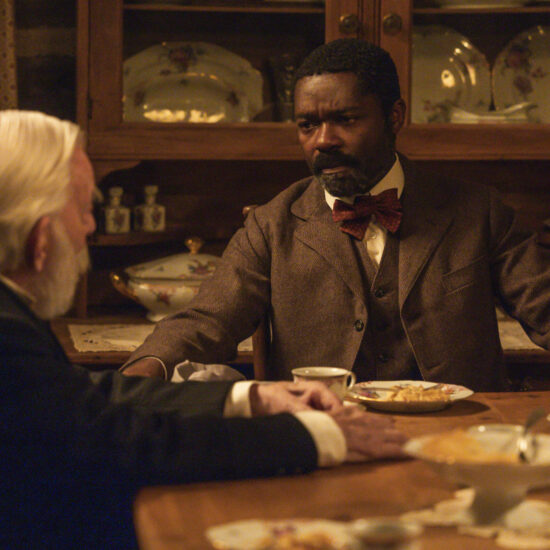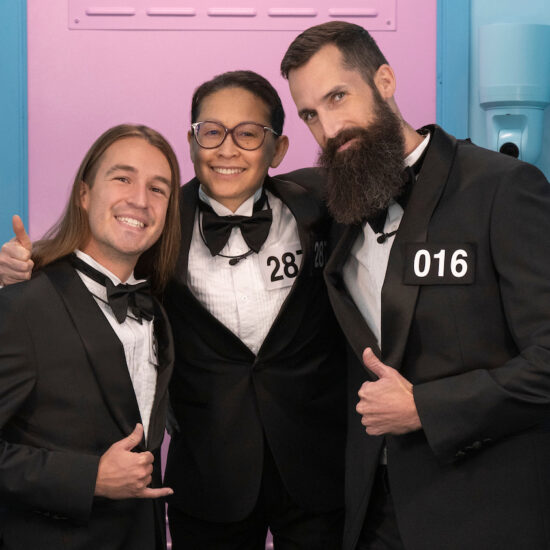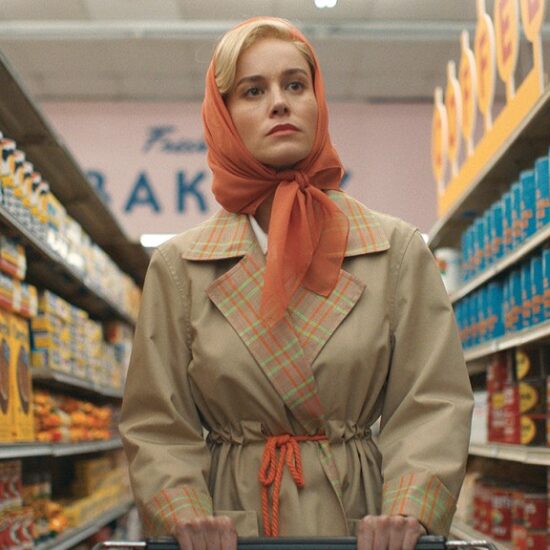
SPOILER ALERT: This interview contains spoilers from “Poirot,” Episode 6 of “Lessons in Chemistry,” now streaming on Apple TV+.
For 30 minutes last year, Millicent Shelton was given control of a freeway off-ramp not far from LAX –– and she didn’t even need the whole half hour.
Shelton was behind the camera directing the sixth episode of Apple TV’s “Lessons in Chemistry,” and in front of her was a very small window for her to get a wide shot that could establish the scope of a sit-in that really happened in 1950s Los Angeles. The shot follows period-specific cars as they descend the off-ramp, only to be blocked by protesters. As the camera moves off the cars, it finds a larger group of sign-wielding protestors gathered under the neighboring overpass as they are confronted by police.
She got the shot she needed in one take.
“It went so fast and smoothly, considering we were told we only had 30 minutes,” Shelton tells Variety. “It was like one of those days right before a holiday where everybody is focused so they can get out. Only this was a day where everybody was focused so they could get it right.”
The story of the protest has been brewing all season in the neighborhood where Elizabeth (Brie Larson) and Harriet (Aja Naomi King) live across from one another. Known as Sugar Hill, that neighborhood was real, and served as a predominantly Black community for prominent doctors, lawyers and artists, including one-time resident and Oscar winner Hattie McDaniel — now, it’s more commonly referred to as West Adams. The real sit-in that inspired the episode arose among that neighborhood’s residents in defiance of a project that planned to build a freeway through their front yards.
As she prepared to film the show’s version of the protest, which attempted to halt construction of the freeway, Shelton’s biggest anxiety wasn’t the 30-minute window for the shoot. It was the fact that no photos exist to show what they were recreating.
“You can read all about it,” Shelton says. “You can go to those neighborhoods today, and see where the highway goes straight through them. We know that it happened, but no one took a picture of the sit-in. So our goal was to humanize that moment.”
The protest interrupts the limited series’ regularly scheduled programming at a pivotal moment for Elizabeth, who has started to take her own stand against the misogynistic studio head (Rainn Wilson) behind her successful cooking series “Supper at Six.” But the sit-in really harnesses the storytelling power of Harriet, who underwent a drastic transformation in the adaptation of Bonnie Garmus’ book. In Garmus’ pages, Harriet is a middle-aged white woman who becomes a friend of Elizabeth’s. The series relocates Elizabeth to Sugar Hill, where she meets its version of Harriet, a younger, driven Black lawyer who puts every bit of her strength and intellect into fighting the encroachment of racially biased progress. All season, she has been speaking against the freeway project, but after the episode opens with footage of Martin Luther King Jr.’s early protests, she comes to see that action may be the only course.
Pretty quickly, Elizabeth recognizes her protest statement in Episode 6 –– wearing pants on live television –– pales in comparison to what Harriet is organizing for the sake of the neighborhood.
“Seeing Elizabeth wear pants feels like a real protest move in her world and you are kind of charmed by it,” says series creator and episode co-writer Lee Eisenberg. “But that’s only one element of the act of protest. You see that what Harriet is contending with, the prospect of losing her home and her community being decimated, is a completely different level of that.”
Accurately illustrating the risk of resistance as a Black person in the 1950s was Shelton and Eisenberg’s driving force in creating the episode from the page to the screen. They worked with a historian to understand the real sit-ins of the day, and Shelton sought examples of other protests to fill in the blanks of not having visual evidence of the Sugar Hill protest.
Before arriving on set, the background and stunt actors who join Harriet, Elizabeth, Wakely (Patrick Walker) and Charlie (Paul James) for the scene were prepped on the gravity of the situation. Coming from a 21st century perspective, Shelton says many of them had the urge to instinctively fight back against the brutality the police were supposed to show them in the moment. But she had to remind them this was a non-violent protest, at least on the part of the protestors.
Conversely, the men playing the police officers were initially too reserved in their approach to the material.
“Most of the police officers were stunt actors, and when they first went to drag away the extras, they were really nice and very gentle,” Shelton says. “I kept having to cut and say, ‘No, you have to be harsher.” I told Lee, if we are going to do this, then we need to represent the trauma that it was. I pushed for it to be traumatic and to show it on the actors’ and the characters’ faces. It is not just about the people getting stomped and dragged, it is about what is internalized.”
Originally, Eisenberg and co-writers Garmus’ and Elissa Karasik’s script called for children to be present at the sit-in as well. But through her research, Shelton found no instances of children at any such event, so she made the case it shouldn’t be part of their interpretation of one either.
“Being a Black parent, I would never allow my kids to go to something like this, especially knowing the type of physical abuse taking place,” she says. “Having kids there would make you feel a certain way, and to Lee’s credit, he understood that. And we didn’t have to have the kids there because you still felt it all.”
By the end of the shooting day, what Shelton captured for the scene was just as singular as her one-take wonder with the off-ramp.
“When you edit a show, it goes through so many iterations,” Eisenberg says. “But Millicent did her cut of that scene, and I don’t think we touched it ever again. She just had such a clear vision for it.”
The scene ends on a completely shattered Elizabeth, who joins the protest to support Harriet — and even takes a big gamble by announcing it to the “Supper at Six” audience. Her involvement in the sit-in was the show’s way of seeing Elizabeth show up for someone else.
“Elizabeth does not know what it is like to be Black in America,” Shelton says. “But she does know what it is to be a woman and be discriminated against. To be unjustly judged by something you cannot change is something she can relate to, and she can support her friend knowing that hurt is hurt, and injustice is injustice.”
Unfortunately, it is not the first time she’s been viscerally confronted with that kind of injustice. The episode also features key flashbacks to the 1930s when Elizabeth’s family roamed the South following her tent revival preacher father. On one of those visits, her relationship with her kind, soft-spoken brother John (Jackson Kelly) is shattered when he kills himself in the same room as the family after their father torments him for being gay.
Showing up for Harriet is, in a way, Elizabeth showing up for John. Grounding the sit-in with the emotional stakes of these two women and their entire neighborhood was how Shelton bore the responsibility of honoring the real event.
“We were very focused on making sure that we authentically told this moment because it is going to be the only visual of it,” she says.













